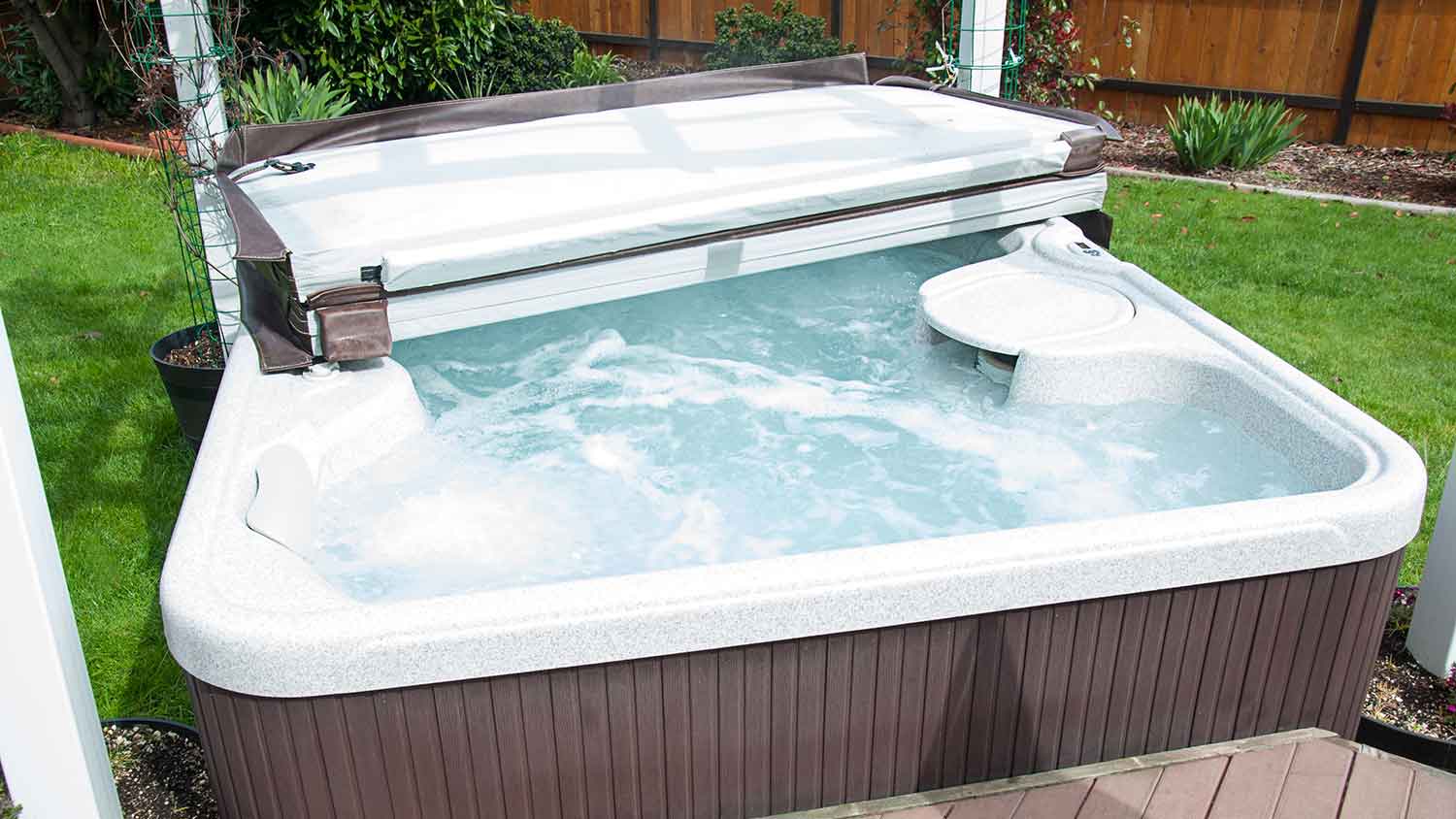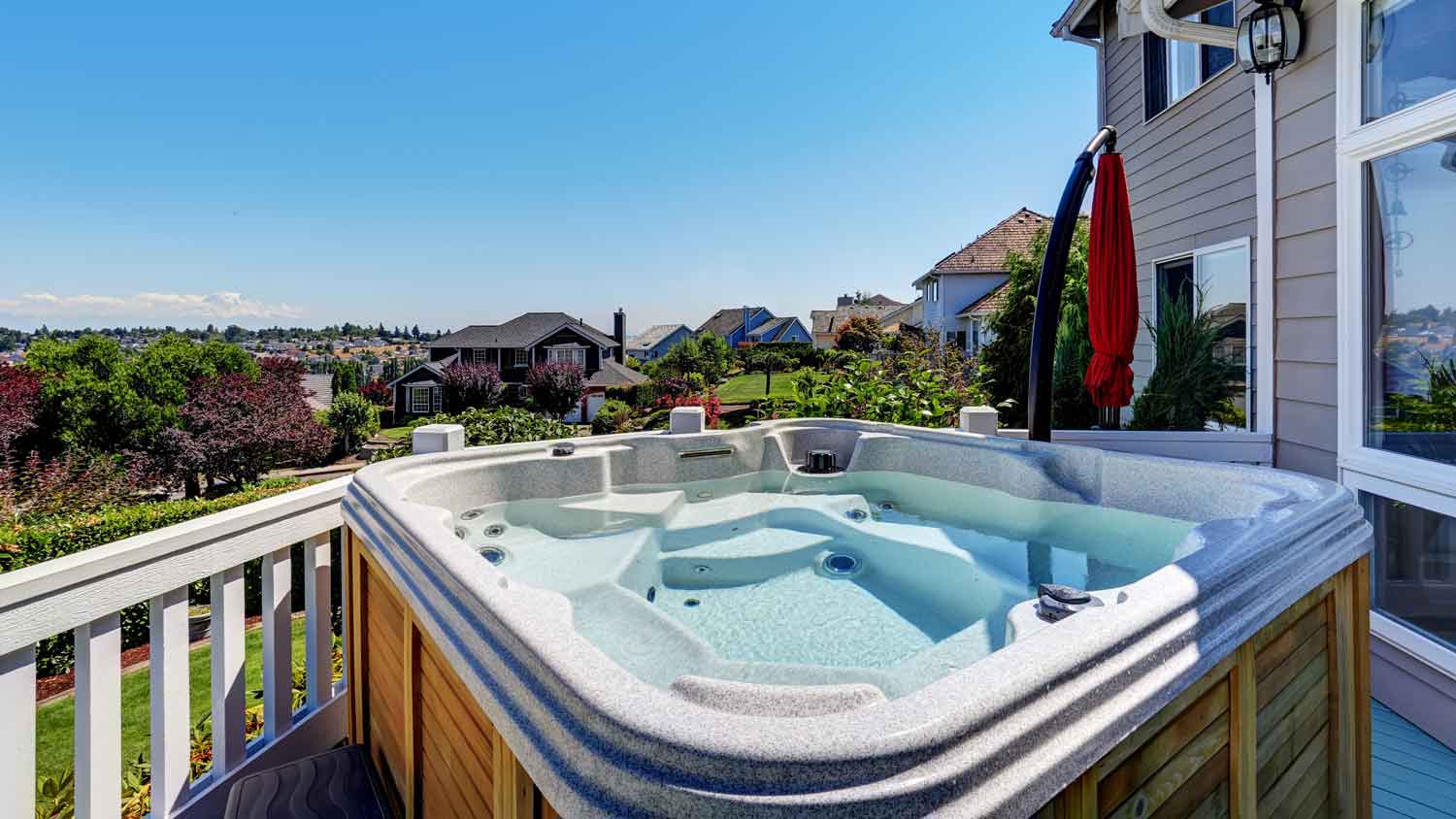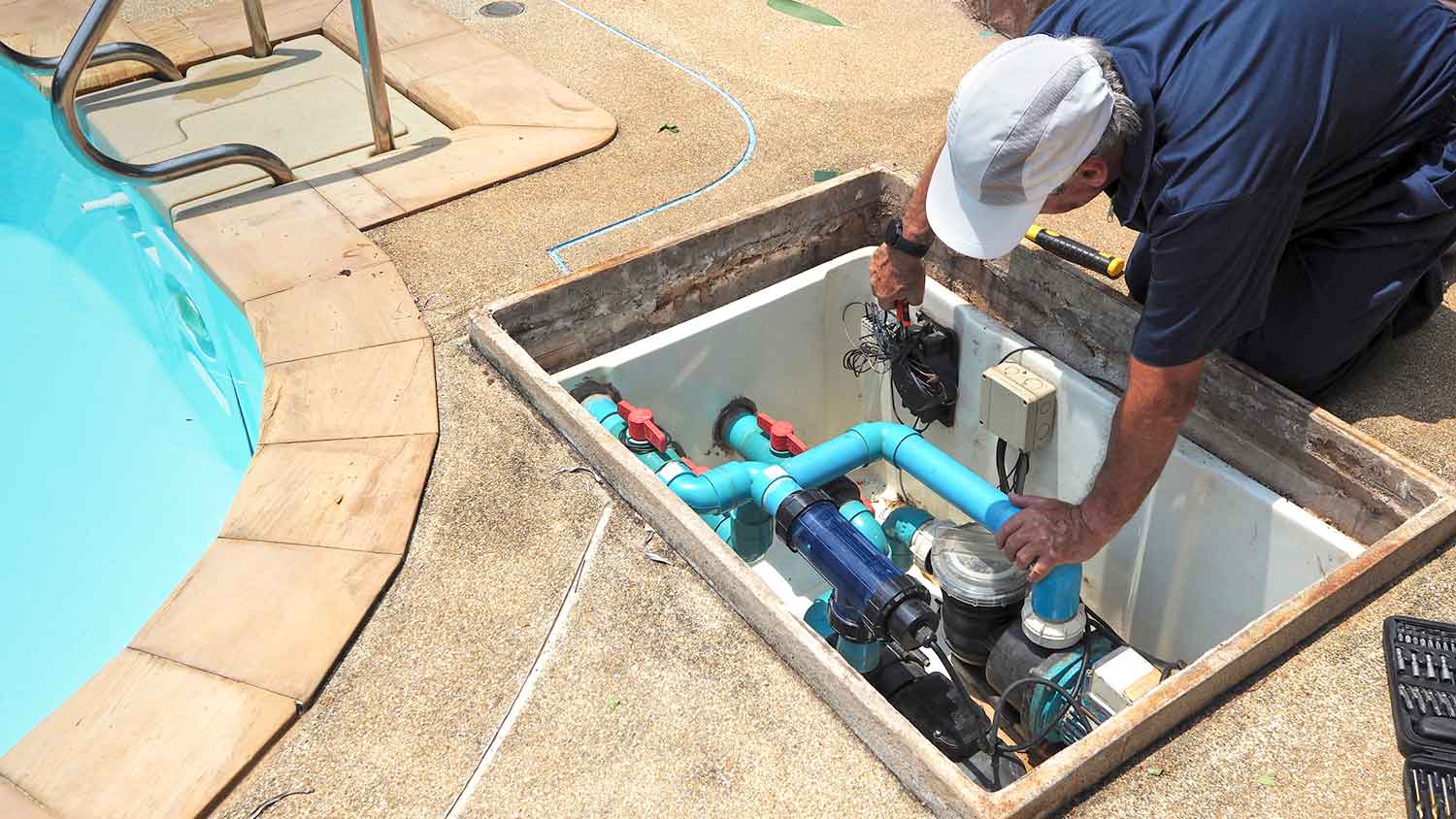
Wondering about hot tub cover costs? Learn what impacts pricing, compare materials, and discover ways to save on your next hot tub cover purchase.
Stay splash-happy with low-chlorine options for your pool water


Chlorine is affordable and widely available, but it can dry out skin and hair and dissipates quickly.
Bromine is a more expensive option, but it’s easier to balance and isn’t as abrasive.
Ionizers and UV lights are great ways to reduce chlorine usage and reduce pool maintenance.
Ozone is an option for those who can stand to invest upfront for reduced maintenance over time.
Whether you have an aboveground pool built to entertain over the summer or a luxurious in-ground oasis meant for adult relaxation, one thing's for sure—you need to clean your pool water. In decades past, pool owners' only option was a high dosage of chlorine, but today, they have various alternatives to choose from, as alternatives to chlorine in pools are becoming more prevalent.
If you're building a new pool and want to kick off with a low-chlorine mix of chemicals or want to switch the treatment in an existing pool, it's essential to understand your options.
While chlorine can effectively eliminate contaminants, it has some downsides that can prompt pool owners to consider other options.
Many swimmers don't experience ill effects from chlorinated pools, but the American College of Allergy, Asthma, and Immunology reports that some can experience skin redness, irritation, and hair discoloration. Miscalculating even a small amount of chlorine can cause red eyes, itchy skin, and dry or discolored hair.
One solution is to invest in a saltwater pool rather than a chlorinated one. However, this requires different pool equipment, so conversion will cost a few thousand dollars for most pools. Instead, you can use a chlorine alternative without investing in new equipment, which is a more affordable option, at least upfront.
Chlorine is highly effective in eliminating contaminants in your pool water, but it dissolves and disappears quickly. You should check your chlorine levels frequently—usually two to three times per week—and make the necessary adjustments, which is time-consuming and costly.
The same UV rays that make splashing around in your pool so pleasant also reduce the longevity of your chlorine. They cause chlorine to dissipate more quickly, sometimes within just a few hours.
You can cut down on chlorine dissipation by installing a pool cover and using it when your pool isn’t in use, but this can be a hassle, especially if you use your pool frequently.
Common signs of chemical issues in pools include cloudy water, algae growth, irritation after swimming, and a strong chlorine odor. If you experience any of these, talk to a pool contractor.

There are a few alternatives to chlorine for your pool to consider. They vary in upfront and ongoing costs, and although most are more expensive than chlorine, they can reduce skin and eye irritation and tend to be less abrasive to hair.
Many homeowners now opt for bromine in hot tubs, spas, and pools because it's softer on sensitive skin than chlorine. Another perk of bromine is that it's easier to balance than chlorine, and you can add it to the water just inside your pool coping or in front of the return pump, like chlorine.
According to U.S. Masters Swimming, bromine is a better fit for indoor hot tubs, spas, and pools because, like chlorine, it's quick to break down in the sun. However, most homeowners can get away with checking bromine levels just once a week, so it’s slightly more stable than chlorine with exposure to sunlight.
One downside to consider is that bromine is more expensive than chlorine. Chlorine tablets cost about $150 for a 50-pound bucket, while bromine tablets run around $300 for the same quantity. Bromine lasts a little longer, but not enough to offset the additional cost. However, it’s less abrasive, has less odor, and is easier on skin, hair, and eyes, so it may be worth the added cost.
An ionizer takes the day-to-day work out of managing your pool's chemicals. This piece of equipment uses copper and silver ions to disinfect the water. Silver helps kill bacteria and viruses, and copper naturally prevents algae from developing in your pool.
Once you install an ionizer and connect it to your pool pump, you won’t have to worry about the cleanliness of your water nearly as much as you would with chlorine. You’ll have to replace the core every few months, but that’s all the maintenance these devices require.
While an ionizer is a great investment that will help boost the longevity of your pool equipment and save you money in the long run, it comes with a higher upfront cost than chlorine and bromine. Ionizers can cost anywhere between $100 and $1,500, depending on the size of your pool.
Installing an ionizer also won't eliminate your need for chlorine, however. You'll still need to use low chlorine levels to control the growth of organic matter in your pool. However, the lower chlorine level will reduce your chemical costs and make for water that’s easier on your skin.
Using an ultraviolet (UV) sterilizer to get your pool in tip-top shape is similar to using an ionizer in that it works in conjunction with low levels of chemicals. Ultraviolet pool sanitizers emit high-powered UV light that disrupts the DNA or RNA of common pool contaminants. When you install an ultraviolet sterilizer to your pool’s filtration system, you can count on using less chlorine and saving money over time.
UV sterilizers are an upfront investment, costing between $350 and $2,000, depending on the size of your pool. The UV sterilizer must be the right size for your pool, so talk with a pool professional before taking the leap.
Switching from a high-chlorine pool to a low or no-chlorine pool can save you money in the long run, protect you from physical side effects, and reduce pool maintenance. If you want to make a switch, you can always call a local pool repair professional for their input.
Ozone is a naturally occurring gas that kills bacteria and viruses on contact, making it a viable alternative to chlorine in pools. While ozone is a better disinfectant than chlorine, it has some significant downsides.
Most importantly, according to the Environmental Protection Agency (EPA), exposure to even low levels of ozone can lead to health risks, such as irritation of the lungs and airways and an increased risk of developing asthma. To use ozone safely in pools, you need high-quality containment equipment to keep ozone gas in your filtration system and out of your pool. Some homeowners don’t want the risks associated with using ozone, so they opt out altogether.
Another downside of using ozone in pools is that the gas is unsafe to transport, so you can’t purchase it at a pool supply store or online like you would chlorine or bromine. Instead, you’ll need to invest in an ozonator, which produces ozone on-site. These can cost an average of $1,000 and can climb up to $2,500, depending on the volume of your pool.
Ozone does have some upsides, though, like no chemical smell in your water, no irritation of eyes or skin, and minimal maintenance required from you on a weekly basis.
Julia Pelly contributed to this piece.
From average costs to expert advice, get all the answers you need to get your job done.

Wondering about hot tub cover costs? Learn what impacts pricing, compare materials, and discover ways to save on your next hot tub cover purchase.

Discover how much a saltwater hot tub costs on average, including installation and ongoing expenses, plus tips to save money and compare DIY vs. pro options.

We could all use some relaxation, but we don’t always have the budget. This guide will show you how much an in-ground hot tub costs—no matter the build.

If your pool feels gritty, you may be wondering "why is my pool filter blowing out sand?" Here are a few reasons why and what to do about it.

Find out the average pool pump repair cost, key price factors, and ways to save. Get expert tips to budget for your pool pump repair.

Saltwater hot tubs are a great alternative to traditional options. Discover the pros and cons of saltwater hot tubs to see if one is right for you.